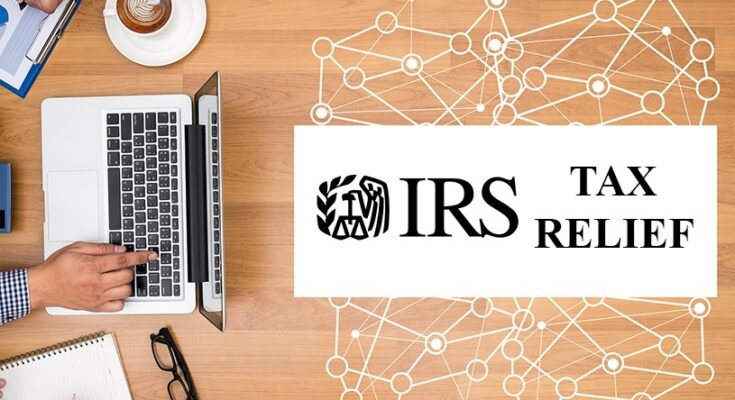Dealing with tax debt can be an overwhelming experience, leading to financial stress and uncertainty. Fortunately, the Internal Revenue Service (IRS) offers various tax debt relief programs designed to help individuals and businesses manage and potentially reduce their tax obligations. Understanding these programs can provide a path to resolving tax issues and achieving financial stability.
Understanding Tax Debt Relief
The Necessity of Relief Programs
Tax debt can accumulate for various reasons, including unpaid taxes, penalties, and interest. This debt can quickly become unmanageable, putting taxpayers at risk of severe consequences, including liens, levies, and garnished wages. The IRS Tax Debt Relief Program aims to alleviate these burdens by offering solutions tailored to individual financial situations, ensuring taxpayers can meet their obligations without undue hardship.
Exploring Available Options
The IRS provides several tax debt relief options, including installment agreements, offers in compromise, currently not collectible status, and penalty abatement. Each option has specific eligibility requirements and benefits, designed to accommodate different levels of debt and financial circumstances. By exploring these options, taxpayers can identify the most suitable path to resolving their tax debt.
Installment Agreements
Flexible Payment Plans
Installment agreements are one of the most accessible forms of tax debt relief, allowing taxpayers to pay their debt in manageable monthly installments. This option is ideal for those who can’t pay their tax debt in full but can commit to regular payments. The IRS offers various installment plans, including short-term and long-term agreements, based on the amount owed and the taxpayer’s ability to pay.
Application Process
Applying for an installment agreement involves submitting a request to the IRS, either online, by phone, or by mail. Taxpayers may need to provide financial information to determine their payment plan eligibility and terms. Once approved, it’s crucial to adhere to the agreed payment schedule to avoid default and potential penalties.
Offers in Compromise
Settling for Less Than Owed
An Offer in Compromise (OIC) allows taxpayers to settle their tax debt for less than the full amount owed. This option is suitable for individuals who cannot pay their full tax liability or doing so would create financial hardship. The IRS considers the taxpayer’s income, expenses, asset equity, and ability to pay when evaluating OIC applications.
Consideration and Approval
The process of applying for an OIC is more complex and requires thorough documentation to prove financial hardship. The IRS carefully reviews each application to determine whether an OIC is appropriate and what the reasonable collection potential is. Taxpayers are encouraged to use the IRS’s pre-qualifier tool to assess their eligibility before applying.
Currently Not Collectible
Temporary Reprieve from Collection
For taxpayers facing immediate financial hardship, the Currently Not Collectible (CNC) status may provide temporary relief from IRS collection activities. Under CNC status, the IRS halts efforts to collect the tax debt, recognizing that the taxpayer cannot make payments without impacting their basic living expenses.
Duration and Conditions
Being placed in CNC status does not eliminate the tax debt, but it offers a reprieve until the taxpayer’s financial situation improves. Interest and penalties may continue to accrue, and the IRS periodically reviews the taxpayer’s income to determine if their financial situation has changed enough to resume payments.
Penalty Abatement
Reducing Penalties
Penalty abatement is a relief option that may reduce or eliminate penalties associated with tax debt, though it does not affect the principal amount owed. This option is available to taxpayers who can demonstrate reasonable cause for their failure to meet tax obligations, such as natural disasters, serious illness, or other extenuating circumstances.
Application and Eligibility
Taxpayers must request penalty abatement and provide supporting documentation to prove their eligibility. The IRS evaluates requests on a case-by-case basis, considering the taxpayer’s history of compliance, the reasons for failing to meet tax obligations, and efforts made to rectify the situation.
FAQs on IRS Tax Debt Relief Program
A1: Eligibility depends on your specific financial situation and tax debt. It’s best to consult the IRS guidelines for each relief option or seek advice from a tax professional to determine which program fits your circumstances.
A2: Some forms of tax debt relief, like settling a debt for less than owed, may impact your credit score. However, entering into an installment agreement does not directly affect your credit score. It’s important to consider the broader implications of each relief option on your financial health.
A3: The approval time can vary significantly depending on the program and the complexity of your tax situation. Installment agreements may be processed relatively quickly, especially if you owe less than $50,000. However, more complicated applications, such as Offers in Compromise, can take several months to review.
A4: Yes, there are fees associated with some tax debt relief applications, particularly for an Offer in Compromise. Additionally, taxpayers are responsible for any accrued interest and penalties until the debt is resolved. It’s important to factor in these costs when considering applying for relief.
A5: Generally, you must be current with all filing requirements to qualify for most IRS tax debt relief programs. The IRS typically requires that you have filed all required tax returns to consider your application for relief.
Conclusion…
In conclusion, navigating IRS tax debt relief programs can be a complex process, but understanding the options available can provide a pathway out of tax debt and towards financial stability. Whether through installment agreements, Offers in Compromise, Currently Not Collectible status, or penalty abatement, the IRS offers multiple avenues for taxpayers to address their obligations in a manner that considers their financial circumstances. It’s essential to evaluate each option carefully, consider seeking professional advice, and stay informed about your responsibilities and the implications of each choice. By taking proactive steps and exploring the tax debt relief programs offered by the IRS, taxpayers can find the relief they need and move forward with greater financial confidence.



